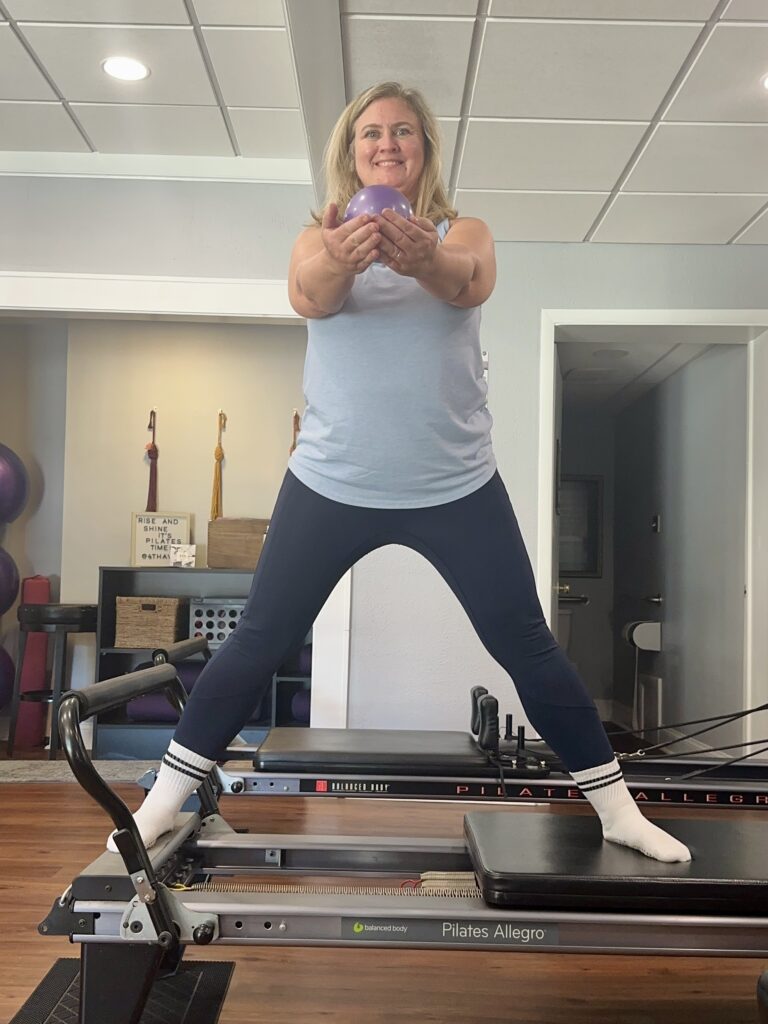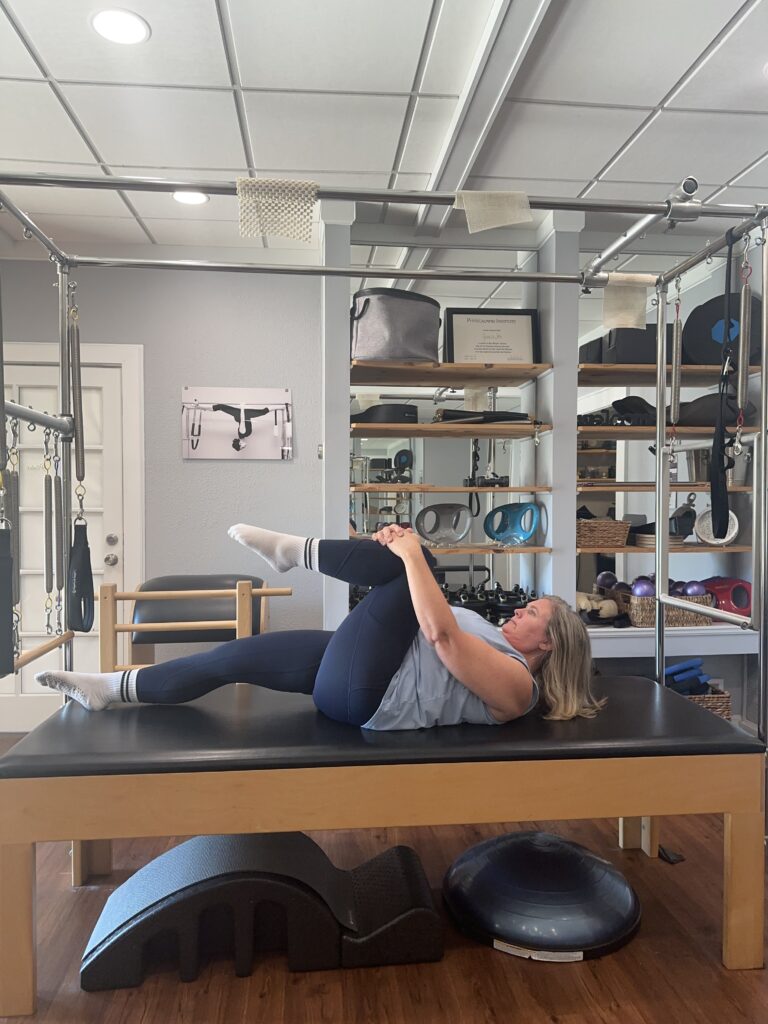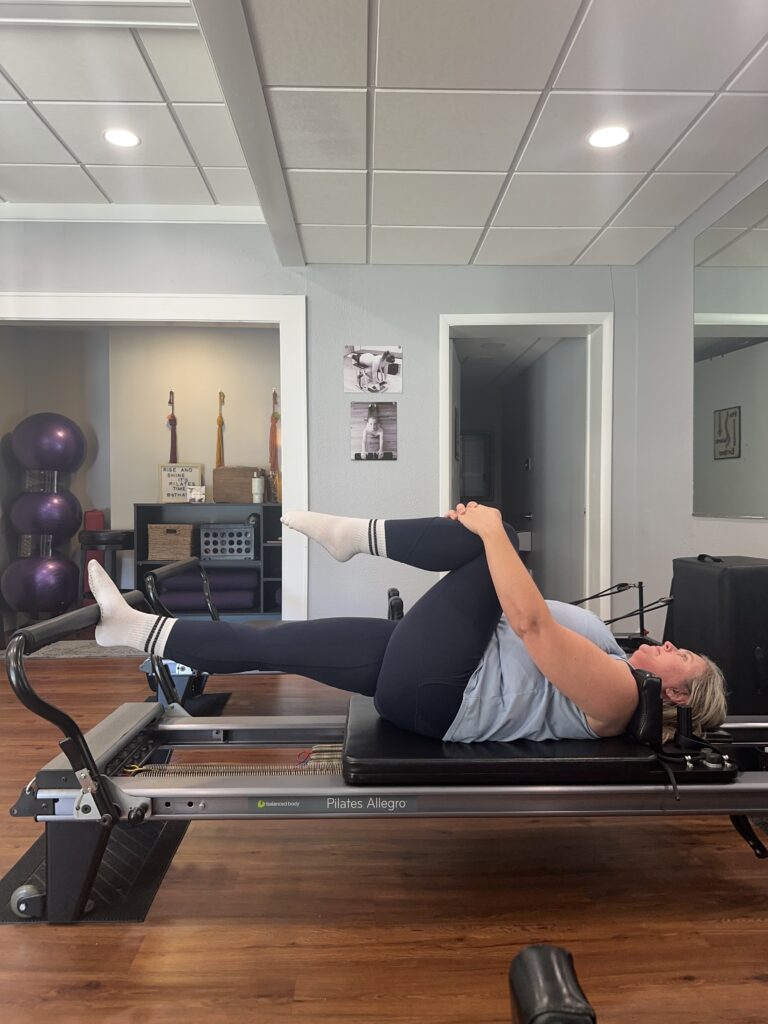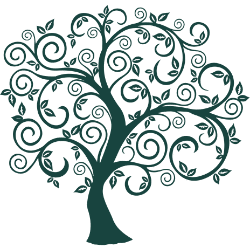Your Complete Guide to Strengthening From Within
You’re reaching for a jar on the top shelf when suddenly, your back protests with a sharp reminder that you’re not 25 anymore. Sound familiar? If you’re nodding along, you’re not alone—and more importantly, you don’t have to accept this as your new normal.
As a Pilates instructor, I’ve watched countless women transform their relationship with their bodies through pilates for active aging core training. Implementing Pilates is like discovering a secret weapon that’s been hiding in plain sight. Your core isn’t just about having abs that look good in a swimsuit (though that’s a nice bonus). It’s your body’s powerhouse, your stability center, and quite frankly, your ticket to moving through life with confidence and grace.

What Makes Pilates Perfect for Active Aging?
Let’s talk straight—aging doesn’t have to mean accepting weakness, pain, or that dreaded “I can’t do that anymore” mindset. How does Pilates benefit core strength? Simply put, it’s a gentle yet powerful approach to fitness that works with your body’s natural aging process, not against it.
Pilates focuses on controlled movements that build strength from the inside out. Unlike high-impact exercises that might leave you feeling like you’ve been hit by a truck, Pilates whispers sweet encouragement to your muscles while building them up steadily and safely.
The Core Connection: Why It Matters More Than Ever
Your core is like the foundation of a house—when it’s strong, everything else stays stable. As we age, this foundation naturally weakens, leading to:
- Poor posture (hello, “tech neck” and rounded shoulders)
- Balance issues that make us hesitant on stairs
- Back pain that turns simple tasks into challenges
- Reduced confidence in our physical abilities
But here’s the exciting part: it’s never too late to rebuild that foundation.
The Balance Revolution: Can Pilates Really Reduce Fall Risk?
Can Pilates improve balance and reduce fall risk in older adults? Absolutely, and I’ve seen it happen time and time again with my own clients. Think of balance as a conversation between your brain, muscles, and nervous system. As we age, this conversation can get a bit muddled—like trying to have a chat in a noisy restaurant.
Pilates acts like noise-canceling headphones, helping these systems communicate more clearly. The slow, controlled movements train your proprioception (your body’s awareness of where it is in space), while the core strengthening gives you a stable foundation to work from.
The Science Behind the Stability
Research consistently shows that regular Pilates practice can:
- Improve balance confidence by up to 40%
- Reduce fall risk through enhanced proprioception
- Increase reaction time when stability is challenged
- Build the deep stabilizing muscles that keep you upright
Your Safety-First Pilates Toolkit
Which Pilates exercises are safest and most effective for seniors focusing on core? I’m glad you asked because safety is always my number one priority. Here are favorite beginner pilates exercises for older adults core:
The Gentle Giants: Core Exercises That Deliver
1. Modified Hundred
- Lie on your back with knees bent
- Lift arms slightly and pulse gently
- Focus on steady breathing (this is key!)
2. Pelvic Tilts
- Perfect for awakening your deep core muscles
- Gentle on the spine, powerful for posture
3. Modified Dead Bug
- Sounds scarier than it is, I promise!
- Excellent for core stability without strain
4. Wall Sits with Breathing
- Combines core activation with functional strength
- Use the wall as your supportive friend
Insert image showing step-by-step photos of these modified exercises
Equipment That Makes a Difference
Let me share some game-changing tools that can elevate your practice:
| Equipment | Benefits | Best For |
|---|---|---|
| Stamina AeroPilates Reformer | Adjustable resistance, full-body support | Comprehensive home practice |
| Gaiam Essentials Thick Yoga Mat | Joint cushioning, non-slip surface | Mat-based exercises |
| Pilates Ring Resistance Band | Gentle resistance, versatile exercises | Targeted core toning |
| Balanced Body Pilates Ball | Balance challenge, joint-friendly | Stability training |
Finding Your Pilates Rhythm
How often should older adults practice Pilates for best core strengthening results? Here’s where I get real with you—consistency beats intensity every single time. I’d rather see you do 15 minutes three times a week than exhaust yourself with hour-long sessions once a week.
The Sweet Spot Schedule
- Beginners: 2-3 sessions per week, 20-30 minutes
- Intermediate: 3-4 sessions per week, 45 – 60 minutes
- Advanced: 4-5 sessions per week, varying intensity
Remember, your body needs recovery time to build strength. This isn’t a race—it’s a lifestyle change.
Mat vs. Reformer: The Great Pilates Debate
Is reformer Pilates more beneficial than mat Pilates for active aging core strength? This is like asking whether coffee or tea is better—both have their magic, and the best choice depends on you.
Mat Pilates: Your Accessible Ally
- Pros: No equipment needed, travel-friendly, cost-effective
- Cons: Requires more body awareness, can be challenging for beginners
- Perfect for: Those who love convenience and minimal equipment
Reformer Pilates: The Supportive Superstar
- Pros: Equipment provides support and resistance, easier to feel muscle engagement
- Cons: Higher cost, requires space or studio access
- Perfect for: Those who benefit from external support and varied resistance


Beyond the Physical: Your Whole-Body Wellness Journey
Can Pilates help with posture and back pain related to aging? This question hits close to home because I see the transformation happen regularly. Poor posture isn’t just about looking slouched—it affects everything from breathing to digestion to confidence.
The Posture-Pain Connection
When your posture improves through pilates exercises for weak core in elderly populations, you’re not just standing taller—you’re:
- Reducing compression on spinal discs
- Improving breathing capacity
- Enhancing overall energy levels
- Boosting self-confidence (seriously, try standing tall and not feeling better!)
Learning Options: Classes vs. Online
Are Pilates classes or online tutorials better for beginners? Both have their place in your fitness journey, and the best choice often combines both approaches.
In-Person Classes: The Community Advantage
- Real-time form corrections
- Social connection and motivation
- Professional guidance for modifications
- Equipment access without investment
Online Options: Flexibility and Comfort
- Practice at your own pace
- No travel time or schedule constraints
- Replay difficult sections
- Privacy to learn without self-consciousness
Pro tip: Start with a few in-person classes to learn proper form, then supplement with online practice at home.
The Mind-Body Magic
How does Pilates contribute to mental well-being and stress reduction in seniors? This is where Pilates becomes truly transformative. It’s not just about building muscle—it’s about building confidence, reducing anxiety, and creating a sense of accomplishment.
The focused breathing and mindful movement act like meditation in motion. I’ve watched students come to class stressed about their day and leave feeling centered and calm. It’s like a reset button for both body and mind.
Your Home Practice Setup
What equipment is recommended for Pilates practice at home for active aging adults? You don’t need to turn your living room into a full studio, but a few key pieces can make your practice more effective and enjoyable:
Essential Equipment List
- Quality mat: The Gaiam Essentials Thick Yoga Mat provides the cushioning your joints deserve
- Resistance tools: Resistance Bands offer versatile, gentle resistance
- Stability support: Gaiam Yoga Block Set helps with modifications and support
- Balance challenge: TheraBand Stability Trainer Balance Disc adds variety to your routine
- Core Essentials:
Adapting for Your Unique Needs
How can Pilates be modified for chronic conditions like arthritis or osteoporosis? This is crucial because your health journey is uniquely yours. Pilates’ genius lies in its adaptability.
Modifications for Common Conditions
Arthritis:
- Focus on gentle range-of-motion exercises
- Use props for support and comfort
- Avoid extreme positions or high-impact movements
Osteoporosis:
- Emphasize spine extension exercises
- Avoid forward flexion (rounding forward)
- Include weight-bearing variations when appropriate
Always consult with your healthcare provider before starting any new exercise program.
Building Your Pilates Foundation
Let’s create a practical starting point. Here’s a simple at home pilates routine that you can begin today:
Week 1-2: Foundation Building
- Breathing exercises (5 minutes)
- Pelvic tilts (5 repetitions)
- Modified hundred (30 seconds)
- Gentle spinal mobility (5 minutes)
Week 3-4: Strength Building
- Add single-leg slides
- Increase modified hundred to 45 seconds
- Include side-lying leg lifts
- Add wall push-ups
Week 5+: Confidence Building
- Progress to more challenging variations
- Add balance challenges
- Include full-body integration exercises
The Pilates vs. Yoga Question
Many people ask about pilates vs yoga for core strength seniors. While both are excellent choices, Pilates tends to be more targeted for core strengthening, while yoga offers broader flexibility and spiritual benefits. Why not enjoy both? They complement each other beautifully.
Your Success Strategy
Here are my top tips for making Pilates a sustainable part of your active aging journey:
- Start slowly and listen to your body
- Focus on form over quantity
- Celebrate small victories
- Stay consistent rather than perfect
- Connect with others on similar journeys
Troubleshooting Common Challenges
“I don’t feel strong enough to start.” Remember, Pilates meets you where you are. Every expert was once a beginner, and every strong core was once weak.
“I’m worried about injury.” Smart concern! Start with gentle modifications and consider working with a qualified instructor initially.
“I don’t have time.” Even 10 minutes of focused Pilates can be beneficial. Quality over quantity, always.
Looking Forward: Your Pilates Journey
As you embark on this journey of Pilates for active aging core strengthening, remember that you’re not just building muscle—you’re building confidence, independence, and a stronger foundation for all of life’s adventures.
The beauty of Pilates is that it grows with you. What feels challenging today becomes your warm-up tomorrow. What seems impossible this month becomes achievable next month.
Your core is waiting to be awakened, your posture is ready to improve, and your confidence is prepared to soar. The question isn’t whether you can do this—it’s when you’ll start.
Take Action Today
Ready to begin your transformation? Start with just one exercise from this guide today. Set a timer for 10 minutes, roll out that mat (or grab the Manduka PRO Yoga Mat for superior comfort), and take the first step toward a stronger, more confident you.
Remember, the best time to plant a tree was 20 years ago. The second-best time is now.
What’s your first move going to be? Share in the comments below—I’d love to hear about your Pilates journey!
Affiliate Disclosure: This article contains affiliate links to products that can enhance your Pilates practice. When you purchase through these links, we may receive a small commission at no additional cost to you. We only recommend products we believe will genuinely benefit your active aging journey. Your support helps us continue providing valuable, research-based content to help you live your strongest life.


